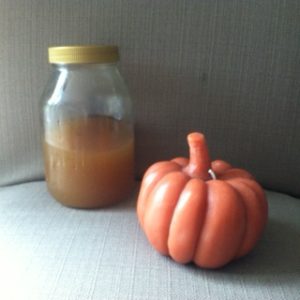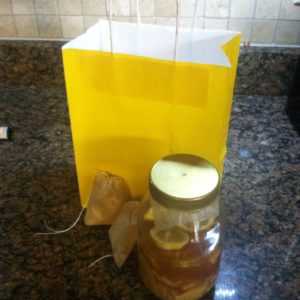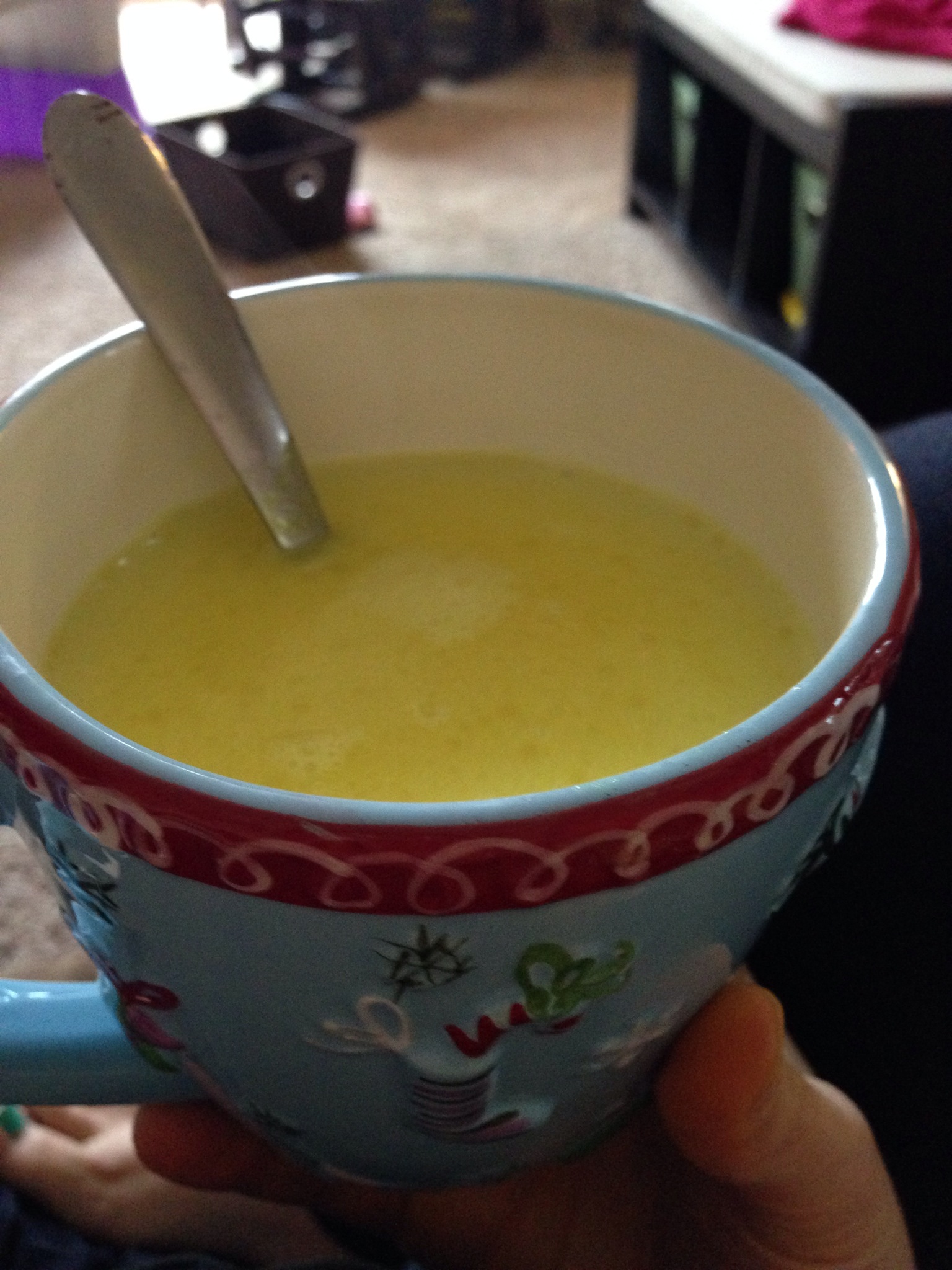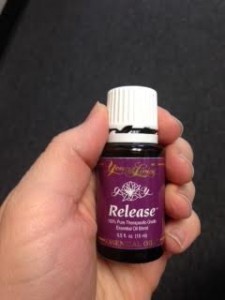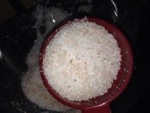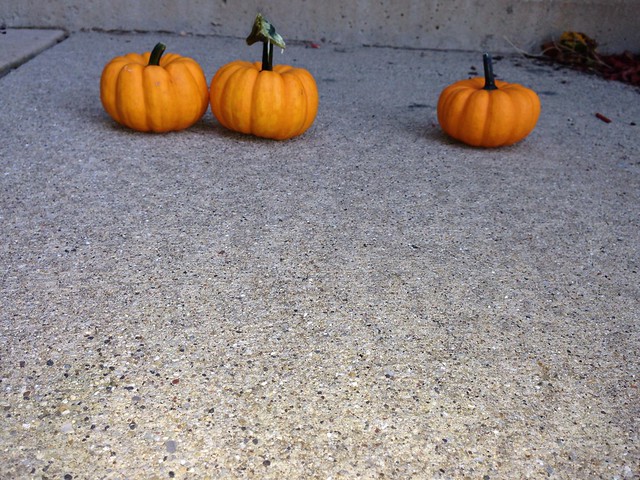
The fall is the time when the lung and large intestine system is most active in Chinese Medicine. Fall is a time of beginning to turn inward, gathering and consolidating after all of the abundant energy available in summer. The Lung and Large intestine system relate to the color white, pungent flavor, the pathogen of dryness, the element of metal, skin and hair, the nose and the emotion of grief.
If we look to the environment we can see how the energy around us is consolidating. The plants in our gardens are turning yellow, drying up and becoming smaller. The leaves of the trees are starting to change color. For many trees the color change starts at the top of the tree and slowly moves down just like the energy of the season. We are moving from the abundance of yang energy of summer to the inner contemplation and rest of winter.
Natural Remedy for Dryness
Just like in Western medicine the lungs is related to respiration. The lungs take in oxygen and qi from the environment and expel waste from the interior of the body. This is known as “getting rid of the stale and taking in the fresh”.
Change Your Breath, Change Your Mood
The energy we take in from breathing is mixed with the food and water we consume to form the qi used for the functions of the body. Just like the quality of food and water you eat and drink is important so is the quality of air you breathe as well as how you breathe. The breath is one of the few processes in the body that is under both conscious and unconscious control. In yoga we breathe in through the nose and out through the nose as the body was anatomically designed for. To take the body out of fight or flight we can exhale longer than we inhale calming the nervous system.
The skin of the body is considered the first line of defense from external pathogens. The “wei qi” is the energy of the body that defends against those pathogens. This is achieved through the opening and closing of the pores. The lung is considered a delicate organ and is easily susceptible to attack. Dressing for the season is important and especially keeping the neck covered to prevent a wind attack which can quickly turn into a stiff neck, sore throat, runny nose etc. The skin has the job of distributing qi and controlling respiration as well.
The lung also assists in regulating the water passages and plays a role in the body’s ability to sweat. When imbalanced this can cause spontaneous sweating, or the inability to sweat.
The lung meridian passes through the throat affecting our speech either in the quality of voice or in the case of grief using our voice, expressing grief in a healthy way etc.
Fall Breathing 5 Minute Meditation
Grief
According to Paul Pitchford in Healing with Whole Foods the personality of those with strong lungs is influenced by this qi: they appear unified, hold onto their direction, create order, and are effective at what they do. How well we “hold on” and “let go” can be expressed in terms of emotional attachment. The large intestine is the yang organ paired with the lung and its obvious function is releasing what is no longer needed. In Chinese Medicine this is emotional and physical.
Grief that is expressed and resolved strengthens the internal basis of health, repressed grief causes long term contraction of the lungs. Lung and large intestine disharmonies regardless of source usually have a root cause of unresolved sadness that needs to be cleared.
Grief and the energy of fall is contracting in nature, if used constructively it can clear repression. This is an emotion and time of year that invites us to look within and identify unresolved pain. Mindfulness gives way to resolution. Using the breath especially long deep breathing helps to clear these emotions and thoughts. It is also interesting to note that lung and colon cancer are very prevelant in our culture.
A note on getting sick. Getting sick a couple times a year can actually be a way for your body to expel toxic build up in the body not a sign that you are unwell. Just like with grief if it important to be mindful of your body during times of illness. Take the time to rest and recover when you get sick to lessen the duration and severity of illness. (get some acupuncture to boost the immune system or just at the onset to assist in a quick resolution)
Meditation for Grief
A Ritual for Letting Go
Nutrition
Pungent is the flavor of fall and can be used for both cleansing and protection. Hot peppers and chiles are pungent in flavor and cause the body to sweat, a great example of how all the associations of the lung are tied together. White pungent foods are most specific to the lungs especially in the onion family and garlic. Turnip, ginger, horseradish, cabbage, radish, daikon radish and white peppercorn. Seaweeds, marshmallow root, flaxseed and fenugreek help to clear excess mucus and replace it with a healthy mucus lining in the body.
Foods high in beta carotene appear to protect the lungs and large intestine against cancer. Some examples include: carrot, winter squash, pumpkin, broccoli, parsley, kale, mustard greens, watercress, wheat or barely grass, common green, blue-green, or golden algae.
Green foods improve digestion of proteins and fats and inhibit viruses as well as aid the body in clearing residues of environmental pollution from fumes, coal dust, smoke etc. Many dark leafy greens look like lungs especially spinach and chard and are especially helpful. Greens also help to clear phlegm in the body.
Adding fiber to the diet is also beneficial in cleansing the lungs and large intestine. Apples, pears, cherries, carrots, oats help to clear cholesterol from the digestive tract. In the fall it is especially benefical to eat these foods cooked.
You will notice that the foods for the fall are also those that are also in season for the fall.
Recipes
Healthy Fall Dessert: Caramel Apple Crisp with Nuts
Perfect Breakfast Recipe for Fall: Oatmeal Waffles
Roasted Red Pepper Chili with Zucchini and Quinoa
Acupuncture
The points used for class are part of Miriam Lee’s Great 10 protocol. Miriam Lee was an important contributor to acupuncture in the United States and would treat up to 18 people an hour. She developed this protocol that could treat virtually any disharmony. Consequently the points we are using fall on the lung and large intestine channels and it is thought that the lung qi is the weakest in modern people.
Li4 also known as the headache point. It is the command point for the head and face meaning that it can be used for any issue involving the head and face eyes, ears, nose, mouth etc. It is also used to treat colds, excessive sweating, red eyes, toothache, nosebleed, loss of voice, sore throat, amenorrhea, prolonged labor, rashes, pain in the body. One of my teachers would say this point is the body’s natural advil.
Li11 According to Insights of a Senoir Acupuncturist current research in China has found that stimulating this point increases white blood cells, this increasing immune function and providing antibiotic and antiinflammtory action. It is used to treat fever, sore throat, loss of voice, toothache, dizziness, hypertension, urticarial, rash, dry skin, shingles, abdomen pain, numbness of the arm, pain of the elbow and ankle.
Lu7 is used to treat chills and fever, nasal congestion, cough, wheezing, shortness of breath, headache, stiff neck, hot or painful urination, poor memory, palpitations, weakness and pain of wrist, clears heaviness and oppression of the chest.
